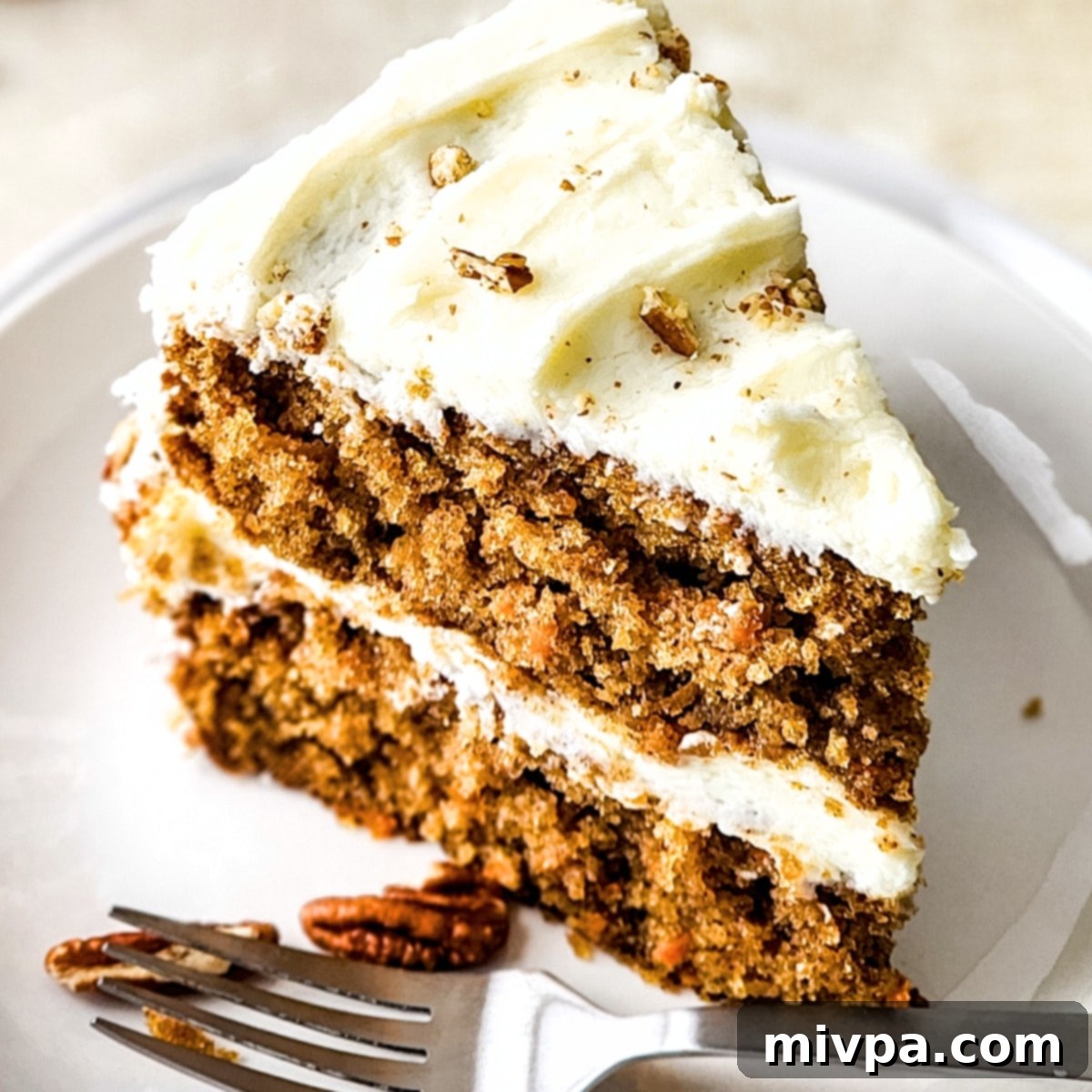The Best Gluten-Free Dairy-Free Carrot Cake: Moist, Flavorful & Easy to Make
Indulge in a slice of pure delight with this incredibly moist, tender, and intensely flavorful gluten-free carrot cake. Topped with a rich, velvety dairy-free cream cheese frosting and adorned with crunchy chopped pecans, this recipe is a true celebration of taste and texture. Perfect for any special occasion, from lively birthdays to cherished holidays like Easter or Mother’s Day, it’s a dessert that caters to everyone, being completely dairy-free and gluten-free. Get ready to bake a masterpiece that promises smiles all around!
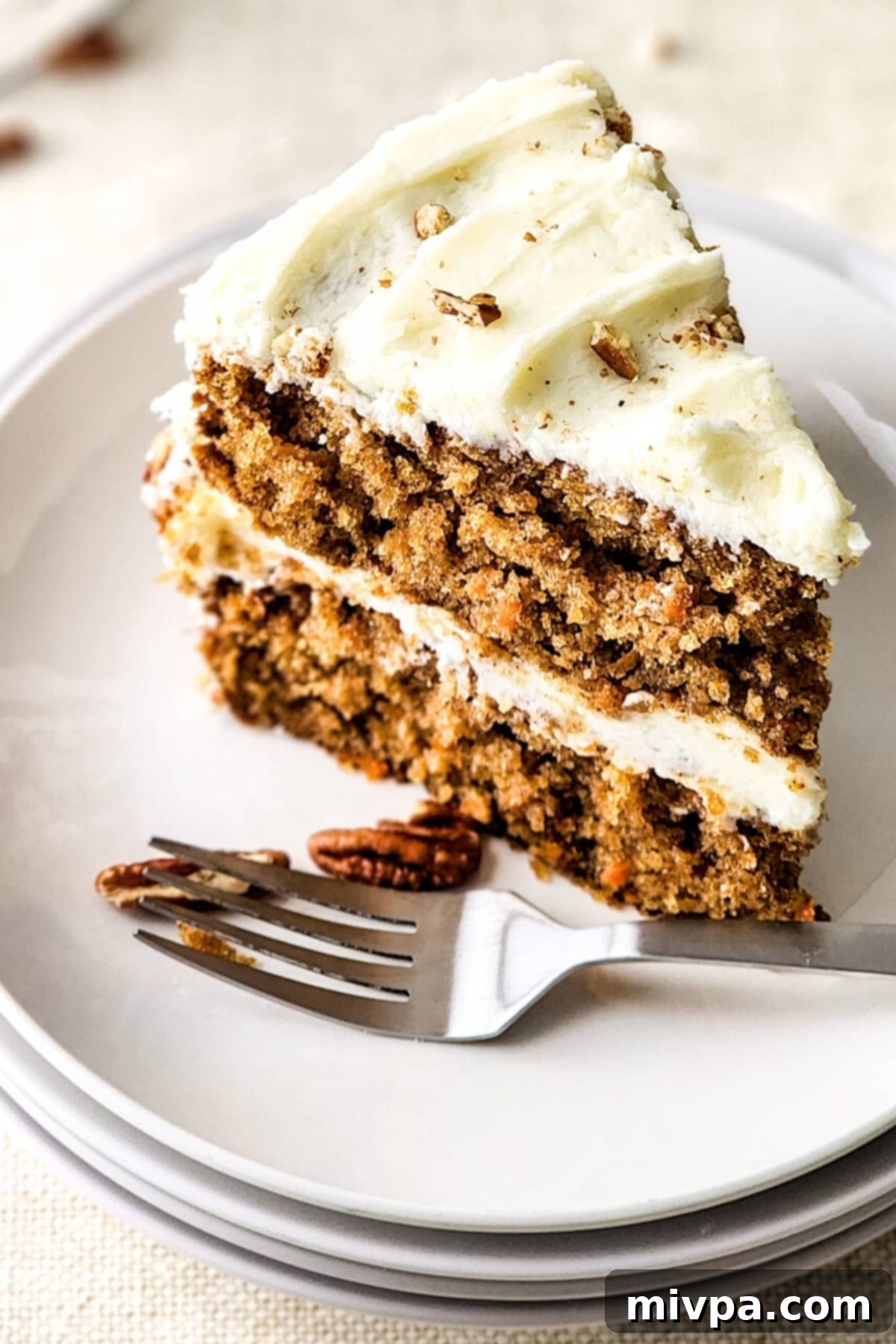
What Exactly is Carrot Cake?
Carrot cake is a beloved dessert renowned for its unique texture and aromatic spice profile. At its heart, it’s a beautifully moist and tender cake, distinguished by the inclusion of fresh grated carrots as a primary ingredient. Beyond the humble carrot, the batter typically incorporates common baking staples such as flour, eggs, sugar, a touch of fat (like butter or oil), leavening agents like baking powder, and a generous blend of warming ground spices. Cinnamon and nutmeg are usually the stars, sometimes accompanied by a hint of cloves or ginger, creating that signature comforting flavor.
The finely grated carrots impart a lovely subtle orange hue and contribute significantly to the cake’s desirable moisture and texture, making it wonderfully tender. Traditionally, carrot cake is lavishly crowned with a creamy, tangy cream cheese frosting, which provides a perfect counterpoint to the sweetness of the cake. To finish, it’s often decorated with a scattering of chopped nuts, most commonly walnuts or pecans, adding a delightful crunch. This flavorful and tasty dessert has earned its place as a popular choice for special occasions, gracing tables at birthdays, and especially during springtime holidays such as Easter and Mother’s Day, where its fresh, earthy notes perfectly complement the season.
Is Traditional Carrot Cake Gluten-Free?
For those navigating dietary restrictions, it’s crucial to understand that traditional carrot cake recipes are typically made with wheat flour. Wheat flour, by its very nature, contains gluten, a protein composite that gives dough its elasticity and helps baked goods maintain their structure. Consequently, conventional carrot cake is not suitable for individuals with Celiac disease, gluten sensitivity, or gluten intolerance, as consuming even small amounts of gluten can trigger adverse reactions and health issues.
However, the culinary world has evolved, and delicious gluten-free alternatives are now widely accessible. Today, we are thrilled to share a fantastic recipe for a two-layer carrot cake that is not only completely gluten-free but also entirely dairy-free. This means that everyone, regardless of their dietary needs, can enjoy a generous slice of this delightful dessert without any concerns. We’ve carefully selected ingredients and methods to ensure the cake retains all the luscious moisture and rich flavor you expect from a classic carrot cake, but without the gluten or dairy. Let’s dive right into crafting this inclusive and utterly delicious treat!
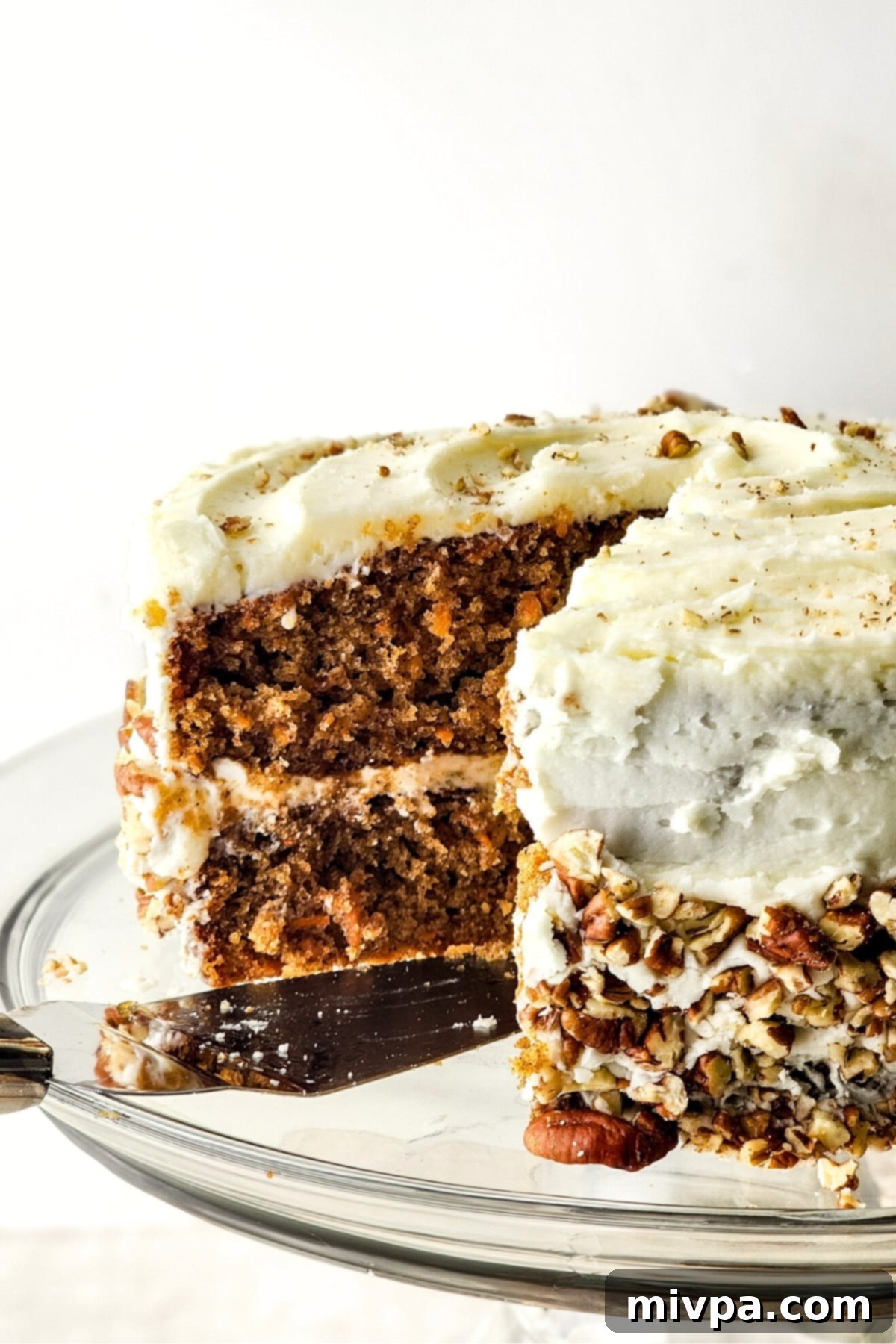
Why This Gluten-Free Dairy-Free Carrot Cake Recipe Will Be Your New Favorite:
- Simple, Accessible Ingredients: You don’t need to embark on a scavenger hunt for exotic items. All the ingredients required for this dairy-free gluten-free carrot cake recipe are readily available at your local grocery store. We believe that delicious baking shouldn’t involve fancy, hard-to-find components, making this recipe approachable for every home baker.
- Effortlessly Easy to Make: Don’t let the impressive appearance fool you – preparing this moist carrot cake is surprisingly straightforward. The process involves a simple two-step method: first, combining the dry ingredients, then integrating them with the wet ingredients. After a quick bake, the only thing left is to generously spread it with our delectable dairy-free cream cheese frosting. It’s a fuss-free recipe designed for success!
- Completely Gluten-Free & Dairy-Free: This is perhaps the biggest win for many! Our easy carrot cake recipe is meticulously crafted to be 100% gluten-free and dairy-free. This means individuals with Celiac disease, gluten sensitivity, or lactose intolerance can enjoy every single bite without a worry. It’s a truly inclusive dessert, ensuring that no one has to miss out on the joy of a homemade, classic carrot cake. This recipe brings the timeless comfort of carrot cake to everyone, making it perfect for gatherings where diverse dietary needs are present.
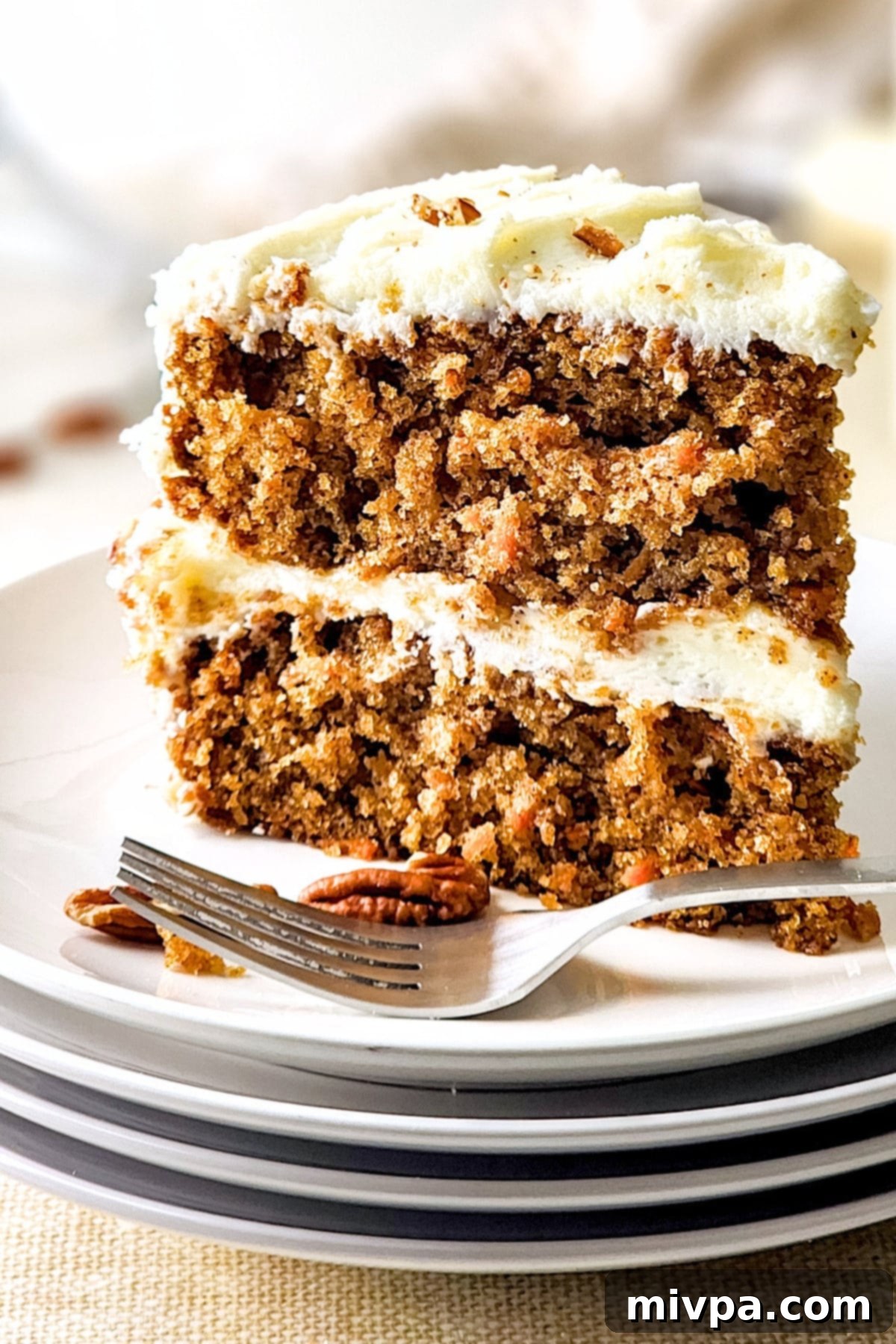
Essential Ingredients for Your Gluten-Free Carrot Cake:
Before you begin your baking adventure, it’s always helpful to visualize the ingredients. Here’s a quick overview of what you’ll need to create this amazing gluten-free carrot cake. Gathering all your components beforehand, a practice known as “mise en place,” will ensure a smooth and enjoyable baking process.
(For the precise measurements and a detailed list, please scroll down to the comprehensive printable recipe card located at the very bottom of this post.)
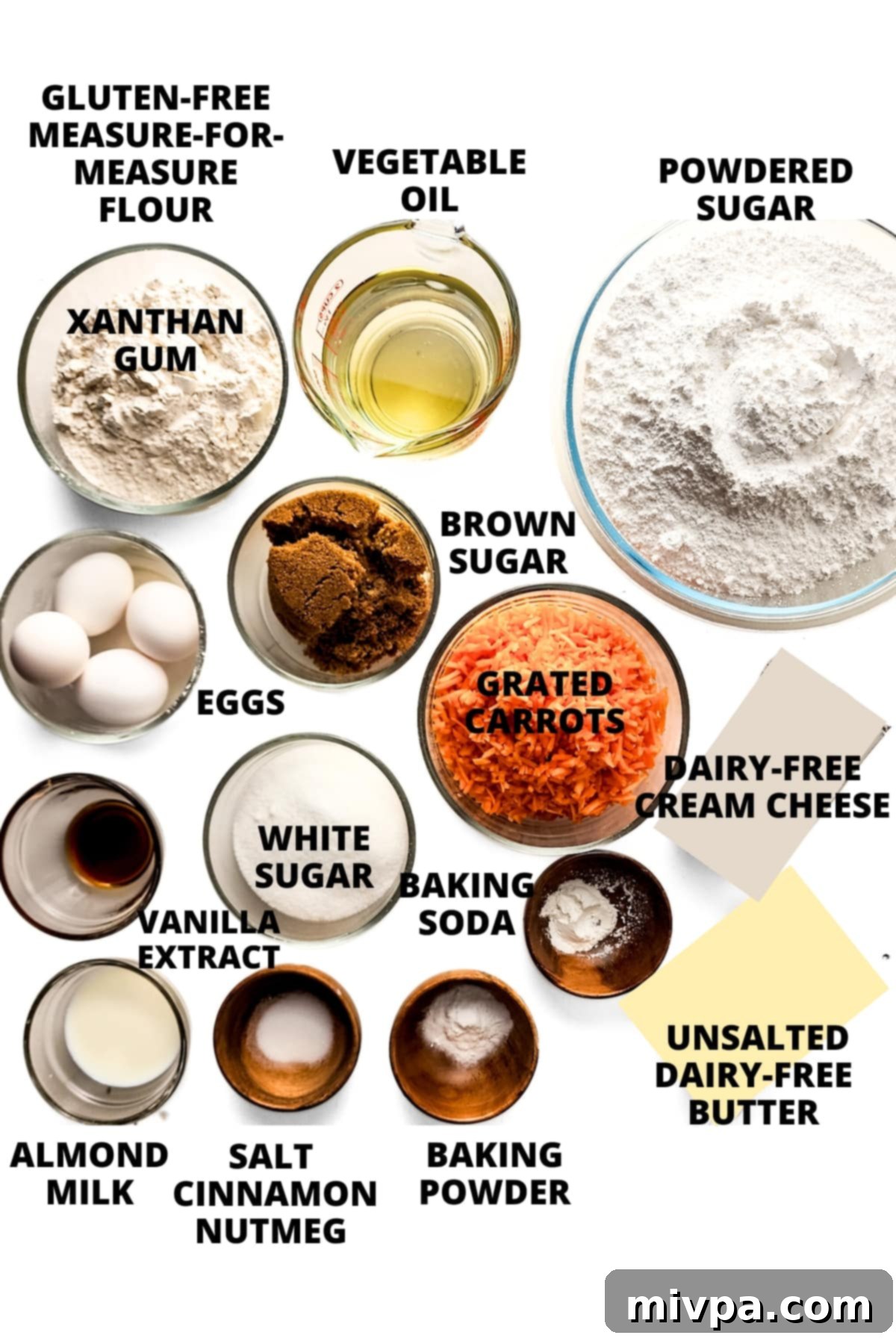
Recipe Notes & Expert Substitutions: Customize Your Carrot Cake
Understanding your ingredients and their potential substitutions is key to successful baking, especially when dealing with dietary restrictions. Here are detailed notes and helpful alternatives to ensure your gluten-free dairy-free carrot cake turns out perfectly every time, tailored to your needs and preferences:
- Gluten-Free Flour Blend: The type of gluten-free flour you use significantly impacts the cake’s texture. I highly recommend opting for a good-quality, gluten-free measure-for-measure flour blend (often labeled as a 1:1 substitute for regular all-purpose flour). Look for blends composed of lighter flours and starches, such as rice flour, tapioca starch, corn starch, or potato starch. These lighter components contribute to a delicate and airy crumb, yielding a much more tender final texture. Conversely, I strongly advise against using gluten-free blends primarily made from heavier flours, like garbanzo bean flour, as they tend to result in a denser, sometimes gummy texture that isn’t ideal for a moist carrot cake.
- Xanthan Gum: This ingredient is a powerhouse in gluten-free baking! Xanthan gum acts as the crucial replacement for gluten, providing structure, elasticity, and helping to bind the ingredients together, preventing your cake from crumbling. Many commercial gluten-free flour blends already include xanthan gum; if yours does, you can omit adding it separately. However, if your chosen blend does not list it, be sure to add the specified amount. For those with a xanthan gum allergy, an equal amount of psyllium husk powder can serve as an excellent substitute, offering similar binding properties.
- White Sugar: Our recipe calls for standard white granulated sugar, which works beautifully. If you prefer, cane sugar is a perfectly fine 1:1 substitute. For individuals managing diabetes or insulin resistance, I highly recommend using granulated monk fruit sweetener. This is a fantastic 1:1 sugar substitute that boasts a zero glycemic index, meaning it won’t spike your blood sugar levels while still delivering the desired sweetness.
- Brown Sugar: We’ve used dark brown sugar for its rich, molasses-like flavor, which complements the spices in carrot cake exceptionally well. However, light brown sugar or coconut sugar can be used interchangeably without significantly altering the cake’s outcome. For those watching their sugar intake, granulated monk fruit sweetener (specifically a brown sugar substitute blend) is an excellent zero-glycemic alternative that mimics the flavor and texture of brown sugar effectively.
- Baking Soda & Baking Powder: The combination of both baking soda and baking powder is crucial for giving this cake its beautiful rise and light texture. Baking soda reacts with acidic ingredients (like brown sugar), while baking powder provides a consistent lift. For those with Celiac disease or gluten intolerance, always ensure you are using certified gluten-free versions of both baking soda and baking powder to prevent cross-contamination.
- Spices: The warm, aromatic notes of ground cinnamon and ground nutmeg are quintessential to classic carrot cake flavor. They are incredibly complementary and elevate the overall taste, making them highly recommended additions for an authentic and delicious experience. You might also consider a pinch of ginger or cloves for an extra layer of warmth.
- Oil: Sunflower oil is my preferred choice due to its neutral flavor and common availability. However, feel free to use any other neutral-flavored vegetable oil you have on hand, such as canola oil, light olive oil, avocado oil, or melted coconut oil (ensure it’s refined if you want to avoid a coconut flavor). For a richer taste that is still dairy-free, melted unsalted dairy-free butter works wonderfully. If dairy is not an issue for you, melted unsalted regular butter can be used instead, imparting a classic buttery richness.
- Eggs: Eggs play a vital role in this recipe, acting as a critical binder that helps hold the cake together, contributing to its structure, moisture, and richness. I haven’t personally tested this specific recipe without eggs. However, if you have an egg allergy or wish to make a fully vegan carrot cake, you might experiment with alternatives like aquafaba (the liquid from a can of chickpeas) or a commercial egg replacer. Be aware that these substitutions can sometimes alter the texture and moisture slightly.
- Vanilla Extract: A splash of good quality vanilla extract is highly recommended. It enhances all the other flavors in the cake, adding a subtle warmth and depth that makes a noticeable difference in the final taste profile.
- Almond Milk: I typically use an unsweetened version of my homemade almond milk, which provides a neutral base for the cake. However, any other unsweetened non-dairy milk will work just as well. Popular choices include cashew milk, rice milk, tigernut milk, oat milk, or coconut milk (from a carton, not canned). If you do not have lactose intolerance, feel free to use regular dairy milk as a direct substitute.
- Shredded Carrots: The key to beautifully integrated carrots is fine grating. I highly recommend using the smaller holes on your box grater to achieve very fine shreds. This ensures the carrots blend seamlessly into the batter, becoming tender as they bake, rather than remaining in noticeable chunks. Finely grated carrots also release their moisture more effectively, contributing to the cake’s overall moistness.
- Dairy-Free Butter (for Frosting): To maintain the dairy-free integrity of the frosting, I use unsalted dairy-free butter. This product is designed to mimic the texture and richness of regular butter. As an alternative, refined coconut oil can also be used, though it might yield a slightly different texture in the frosting. For those who can consume dairy, unsalted regular butter is the traditional choice and can be used directly.
- Dairy-Free Cream Cheese: For a truly dairy-free cream cheese frosting, dairy-free cream cheese is essential. Many excellent brands are available on the market today. If dairy is not an issue for your diet, traditional unsalted regular cream cheese can be used for the classic flavor and tang.
- Powdered Sugar: Also known as confectioner’s sugar, powdered sugar is crucial for achieving a smooth, lump-free frosting. Its superfine texture allows it to dissolve effortlessly into the butter and cream cheese. Do not skip the sifting step, as it helps remove any remaining lumps. For diabetics or those managing insulin resistance, powdered monk fruit sweetener is an excellent 1:1 substitute that provides sweetness without affecting blood sugar levels.
- Pecans (for Garnish): I love the earthy flavor and delicate crunch that unsalted chopped pecans add as a garnish to this cake. However, you can certainly customize this! Other unsalted chopped nuts, such as almonds, walnuts, macadamia nuts, cashew nuts, or even pistachios, will work equally well and add their own unique flavor and texture. Choose your favorite, or mix a few for an interesting combination.
How to Make Gluten-Free Dairy-Free Carrot Cake: A Step-by-Step Guide
Creating this delicious cake is a rewarding process. Follow these simple steps for a perfect, moist, and flavorful gluten-free carrot cake:
1. Whisk Dry Ingredients Thoroughly
In a large mixing bowl, combine all your dry ingredients: the gluten-free measure-for-measure flour, xanthan gum (if your flour blend doesn’t already contain it), white sugar, brown sugar, baking soda, baking powder, salt, ground cinnamon, and ground nutmeg. Using a whisk, stir them together thoroughly until all ingredients are well combined and there are no visible lumps. This ensures even distribution of the leavening agents and spices throughout the batter for consistent flavor and rise.
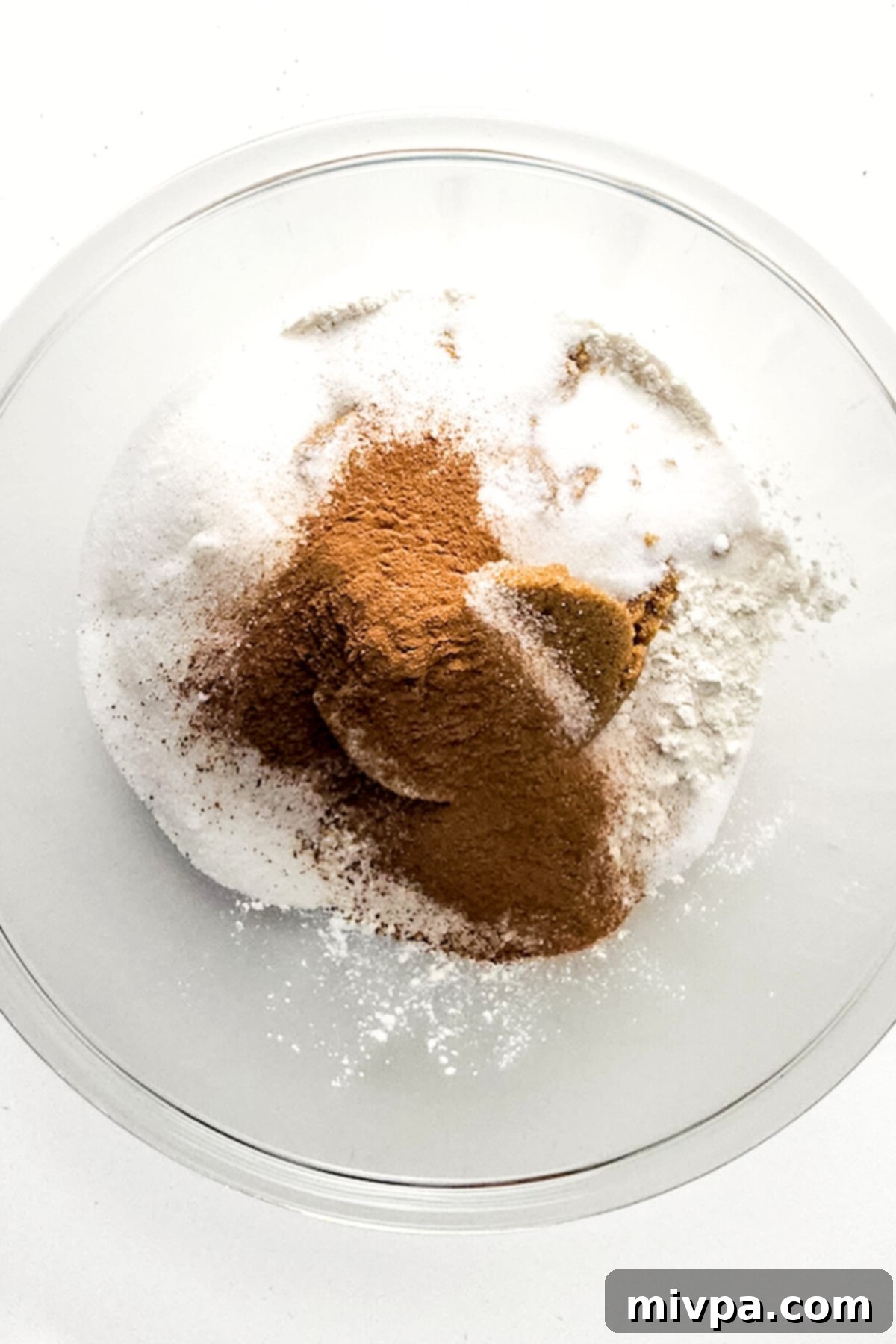
2. Incorporate Wet Ingredients
To the bowl of dry ingredients, add the liquid components: vegetable oil, eggs, vanilla extract, and unsweetened almond milk. Whisk these wet ingredients into the dry mixture until a smooth and consistent batter forms. Be careful not to overmix; simply combine until no streaks of dry flour remain. This step brings the batter to life, preparing it for the star ingredient.
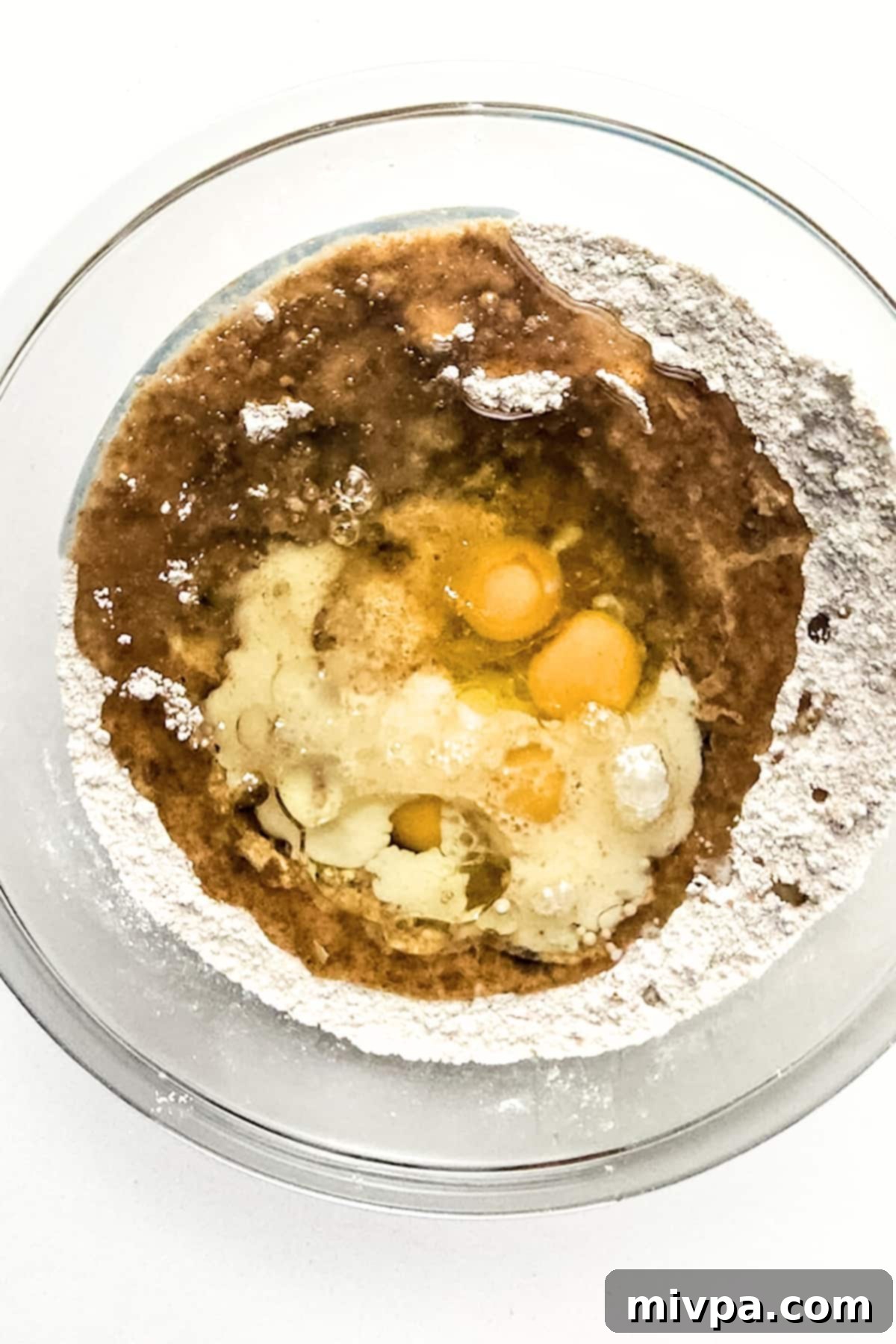
3. Gently Fold in Shredded Carrots
Now for the key ingredient! Add the finely shredded carrots to the batter. Using a spatula, gently fold the carrots into the mixture until they are thoroughly combined and evenly distributed throughout the batter. This ensures every slice of cake will have that signature carrot goodness and moisture. Avoid over-mixing during this stage to keep the cake tender.
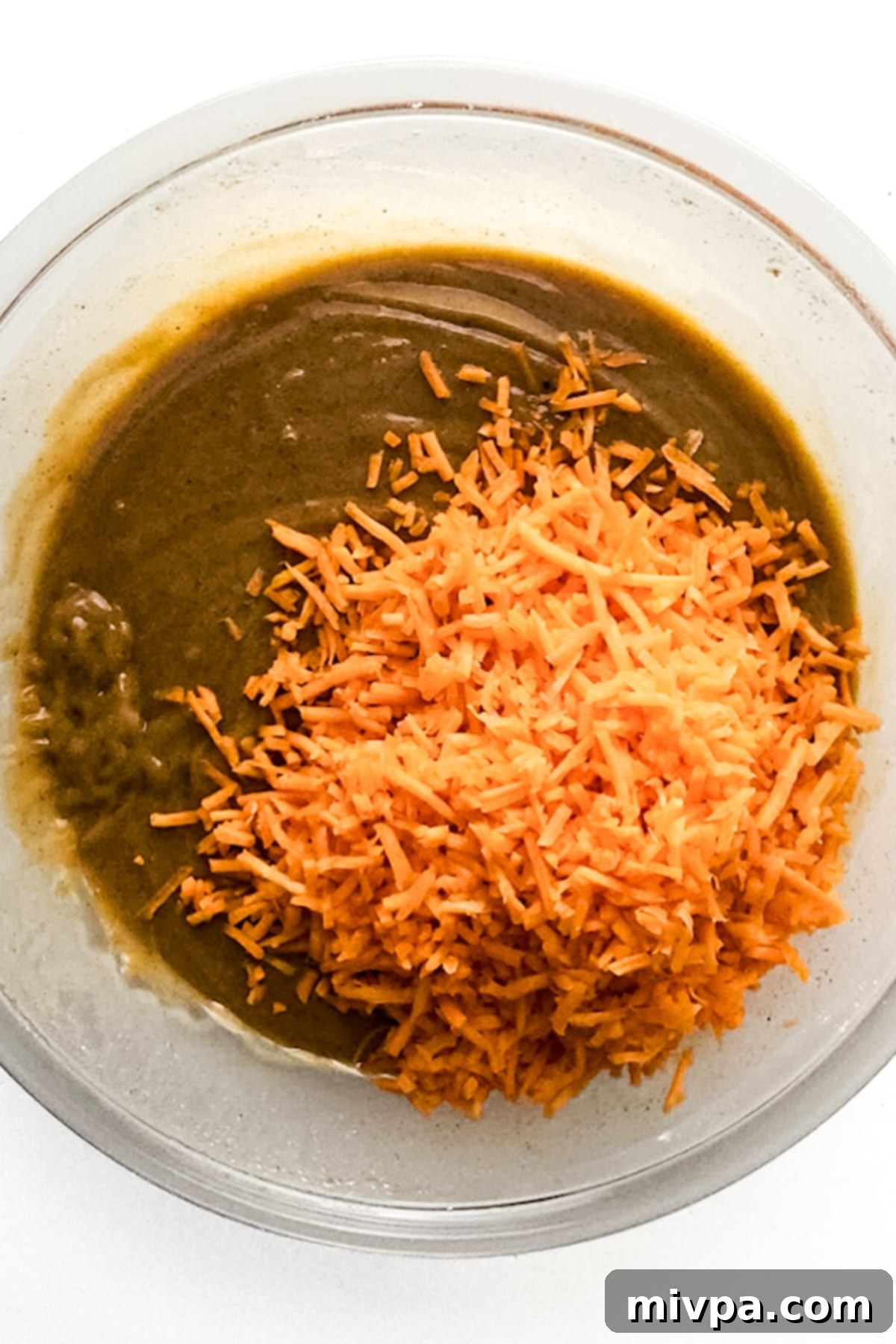
4. Prepare Pans and Divide Batter
Preheat your oven and prepare your baking pans. Generously spray two 9-inch round baking pans with a nonstick baking spray, ensuring even coverage to prevent sticking. Divide the carrot cake batter evenly between the two prepared pans. You can eyeball it or use a kitchen scale for precision, which helps ensure both cake layers bake uniformly and are of similar height.
5. Bake Until Golden and Done
Place the filled baking pans in your preheated oven at 350°F (175°C) and bake for approximately 30-35 minutes. Baking times can vary slightly depending on your oven, so keep an eye on them. The cakes are ready when a toothpick inserted into the center of each comes out clean, with no wet batter attached. The tops should be golden brown and spring back lightly when gently pressed.
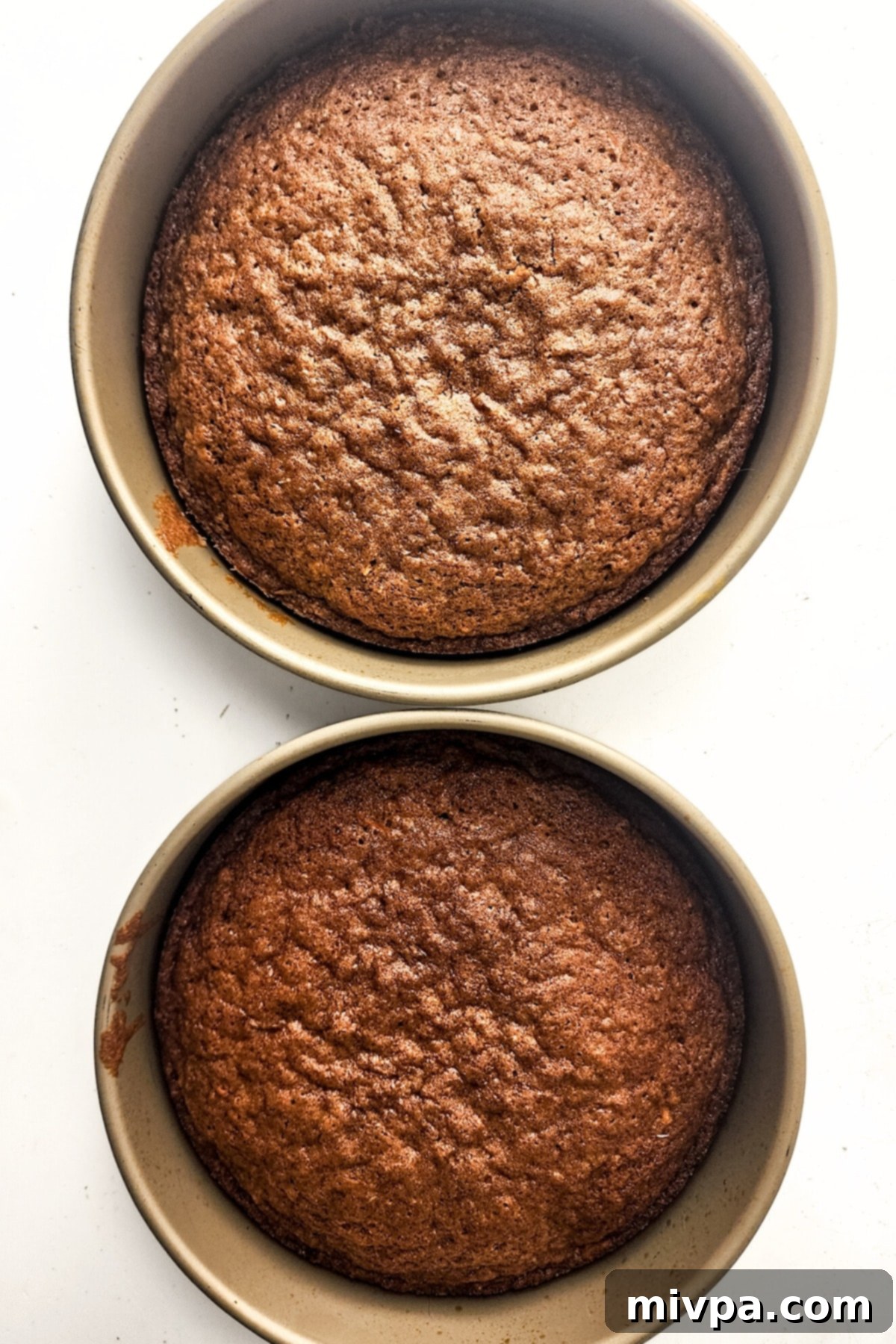
6. Prepare the Dairy-Free Cream Cheese Frosting
While your delightful carrot cake layers are baking and cooling, you can whip up the luscious dairy-free cream cheese frosting. In a large mixing bowl, add the softened dairy-free butter and dairy-free cream cheese. Using a hand mixer (or stand mixer), beat them together on medium speed until the mixture is light, fluffy, and completely smooth. Gradually add the sifted powdered sugar, about 2 cups at a time, blending thoroughly between each addition until all the sugar is incorporated and the frosting is smooth and creamy. Sifting the sugar is crucial to avoid lumps!
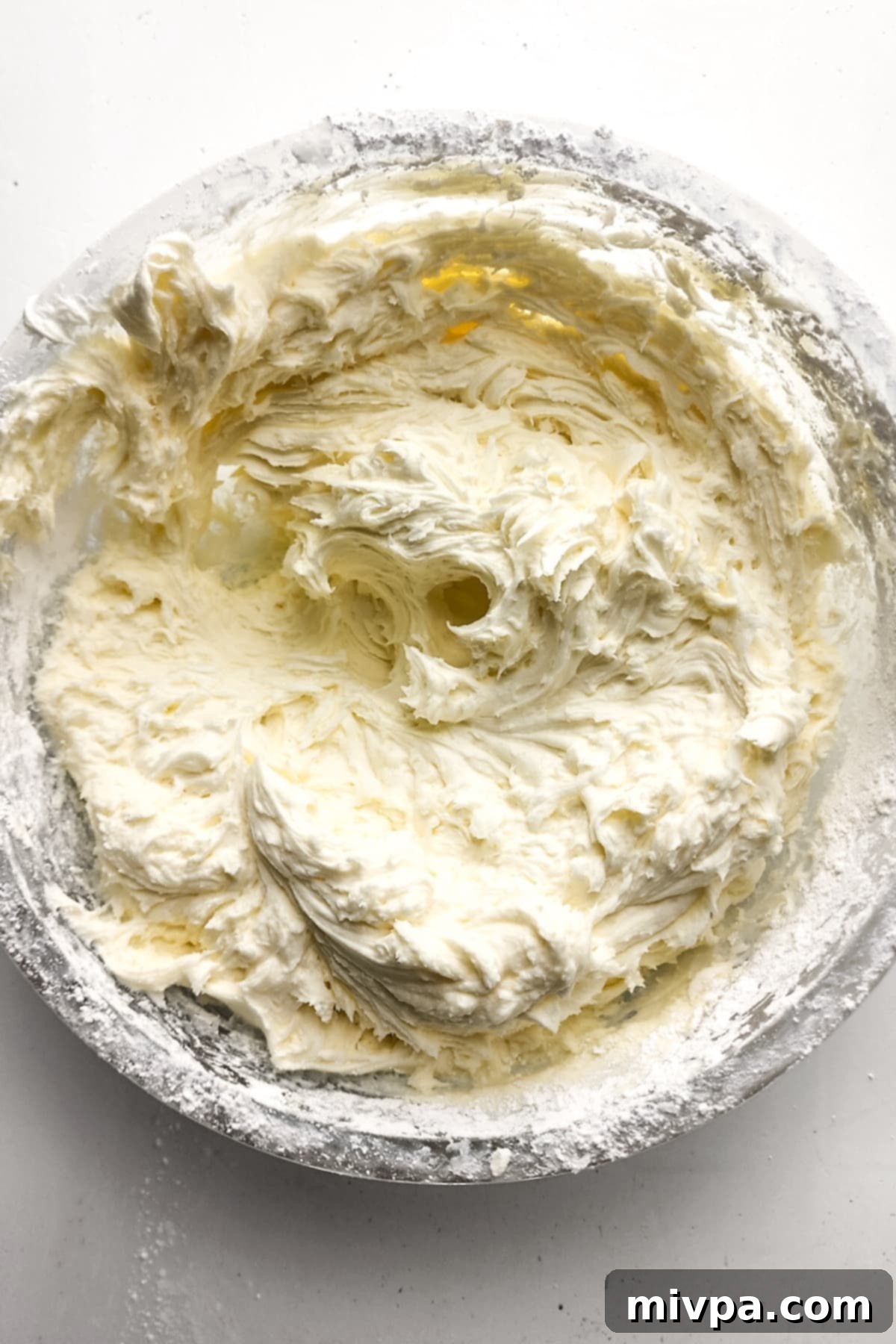
7. Allow Cake Layers to Cool Completely
Patience is key here! Once your cake layers are fully baked and out of the oven, transfer them to a wire rack to cool completely. This step is absolutely essential. Attempting to frost a warm cake will cause the frosting to melt, slide off, and create a messy outcome. Ensure the cakes are at room temperature, or even slightly chilled, before moving on to the frosting stage for best results.
8. Artfully Spread the Frosting
Once the cake layers are completely cooled, it’s time for the fun part – frosting! Place the first cake layer on your serving plate or cake stand. Use an offset spatula or knife to generously spread about half of the prepared dairy-free cream cheese frosting evenly over the top of this layer, right to the edges. Carefully place the second cake layer on top, aligning it. Then, spread the remaining frosting over the top and around the sides of the entire cake, creating a smooth and appealing finish. Don’t worry about perfection; homemade cakes always have a charming rustic appeal!
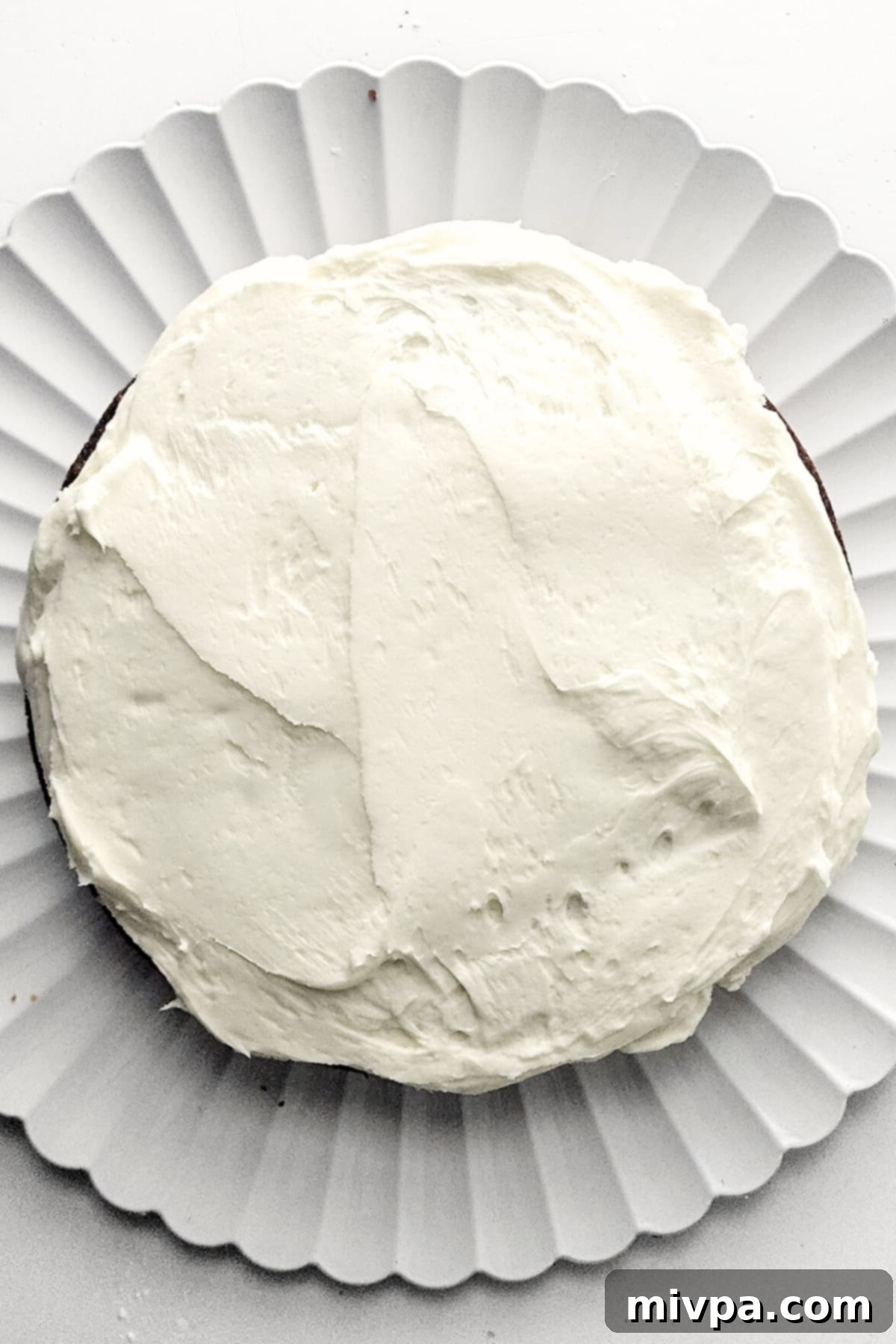
9. Garnish with Chopped Pecans
To add a final flourish and a delightful textural contrast, gently press the chopped pecans around the sides and/or on top of the frosted cake. This not only makes the cake visually appealing but also adds a wonderful nutty flavor that complements the carrot cake beautifully. You can get creative with your pecan placement, covering the entire sides or just creating a border.
10. Slice, Serve, and Savor!
Your magnificent homemade gluten-free dairy-free carrot cake is now complete! Carefully slice into generous portions, serve, and bask in the joy of sharing this moist, tender, and incredibly flavorful dessert with your loved ones. Get ready for compliments!
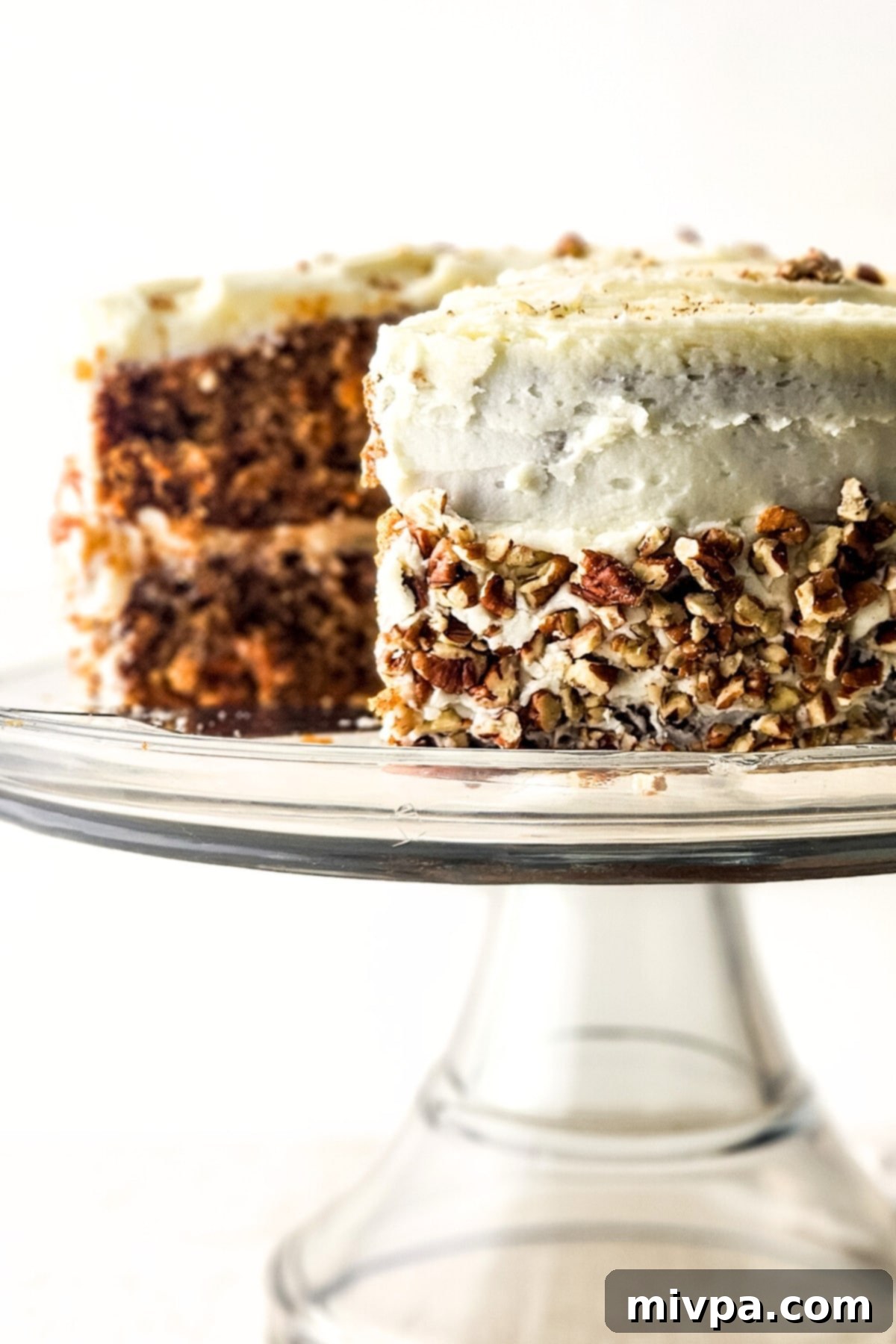
Dish by Dish Tips & Tricks for the Perfect Carrot Cake:
Mastering your gluten-free carrot cake is all about these little details. Here are some expert tips and tricks to elevate your baking:
- Grate Carrots Finely for Best Texture: This is a non-negotiable step for a truly moist and evenly textured cake. Always ensure you use finely grated carrots. The smallest holes on your box grater are ideal for this. If the carrot pieces are too large, they won’t soften sufficiently during baking and might remain noticeably crunchy, failing to integrate well with the tender cake batter.
- Transform into Zucchini Cake: Feeling adventurous or have extra zucchini? You can easily adapt this recipe to make a delicious zucchini cake! Simply swap out the grated carrots for an equal amount of grated zucchini. However, zucchini contains more water than carrots, so it’s absolutely crucial to squeeze out as much moisture as possible from the grated zucchini using a clean kitchen towel or paper towels. This prevents the excess liquid from making your cake batter too watery and yielding a soggy cake.
- Add Raisins for Extra Moisture and Sweetness: For an even more indulgent and moist cake, consider folding in 2 tablespoons of golden raisins (or regular raisins) along with the shredded carrots. They add pockets of chewy sweetness and extra moisture that are delightful.
- For a Tangy Cream Cheese Frosting: If you love a frosting with a bright, zesty kick, feel free to add 1 teaspoon of fresh lemon juice to your dairy-free cream cheese frosting. The acidity of the lemon juice perfectly balances the sweetness and richness, enhancing the overall flavor profile.
- For a Spiced Cinnamon Cream Cheese Frosting: If you’re a cinnamon enthusiast and want to double down on the warming spices, add 1/2 teaspoon of ground cinnamon to your frosting mixture. It will beautifully complement the cinnamon already present in the cake, creating a harmonious and aromatic experience.
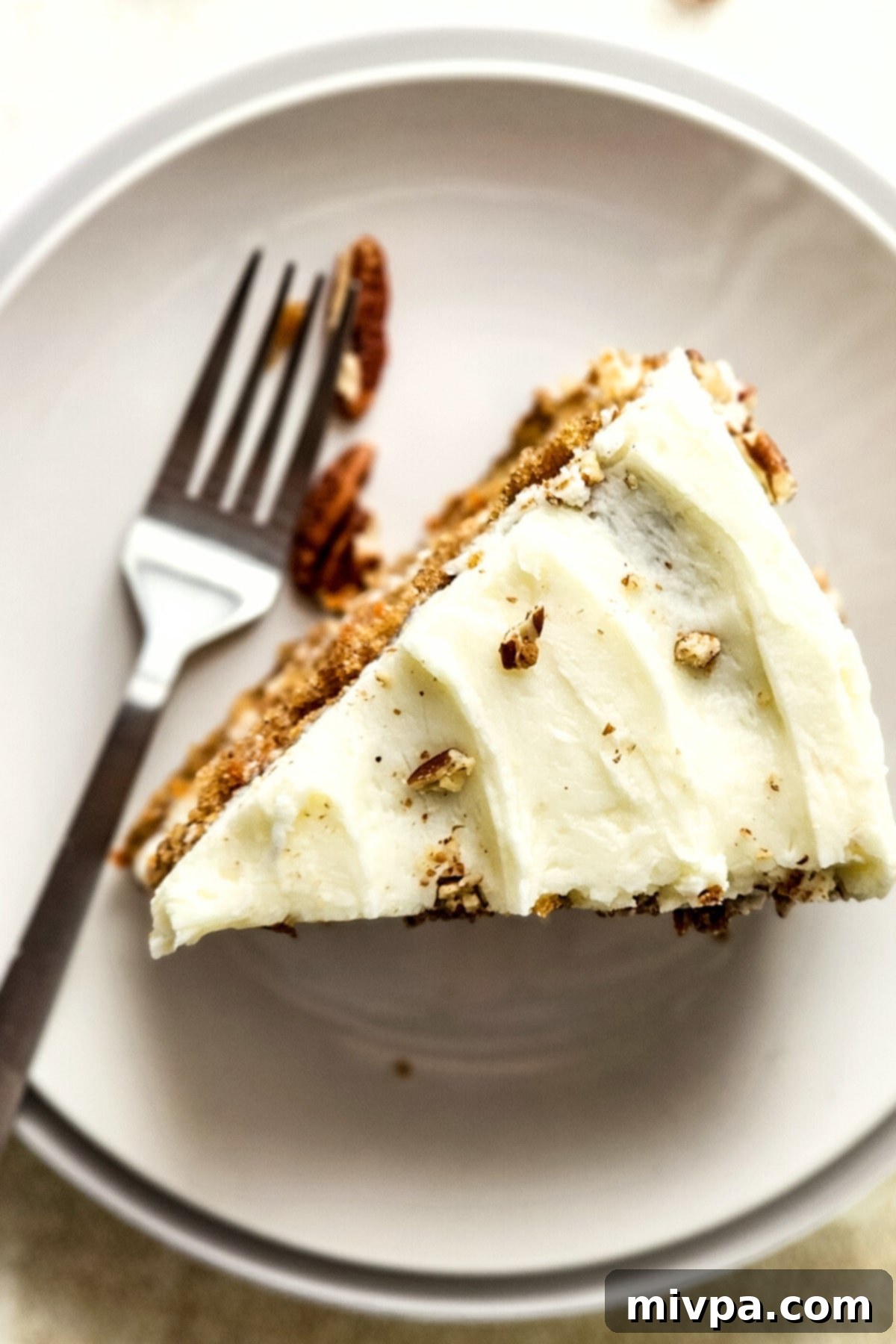
Frequently Asked Questions About This Gluten-Free Carrot Cake:
To maintain its freshness, moisture, and delicious flavor, it’s best to store your frosted gluten-free dairy-free carrot cake in the refrigerator. Place the entire cake (or individual slices) in an airtight container. Alternatively, you can carefully wrap the cake tightly in plastic wrap, ensuring no air can get to the exposed cake surfaces. Stored this way, it will remain wonderfully fresh and flavorful for up to 5 days. Always ensure the frosting is firm before wrapping to prevent sticking.
Absolutely, freezing is a fantastic way to enjoy this delicious cake later! To freeze, first ensure that the cream cheese frosting is completely set and firm. You can achieve this by chilling the frosted cake in the refrigerator for an hour or two. Once firm, wrap the entire cake or individual slices securely in several layers of plastic wrap, then add a layer of aluminum foil for extra protection against freezer burn. Place the well-wrapped cake in a freezer-safe container or heavy-duty freezer bag. It can be frozen for up to 2 months. When you’re ready to enjoy, transfer the frozen cake to the refrigerator and let it thaw completely overnight before slicing and serving. This slow thawing process helps maintain its moist texture.
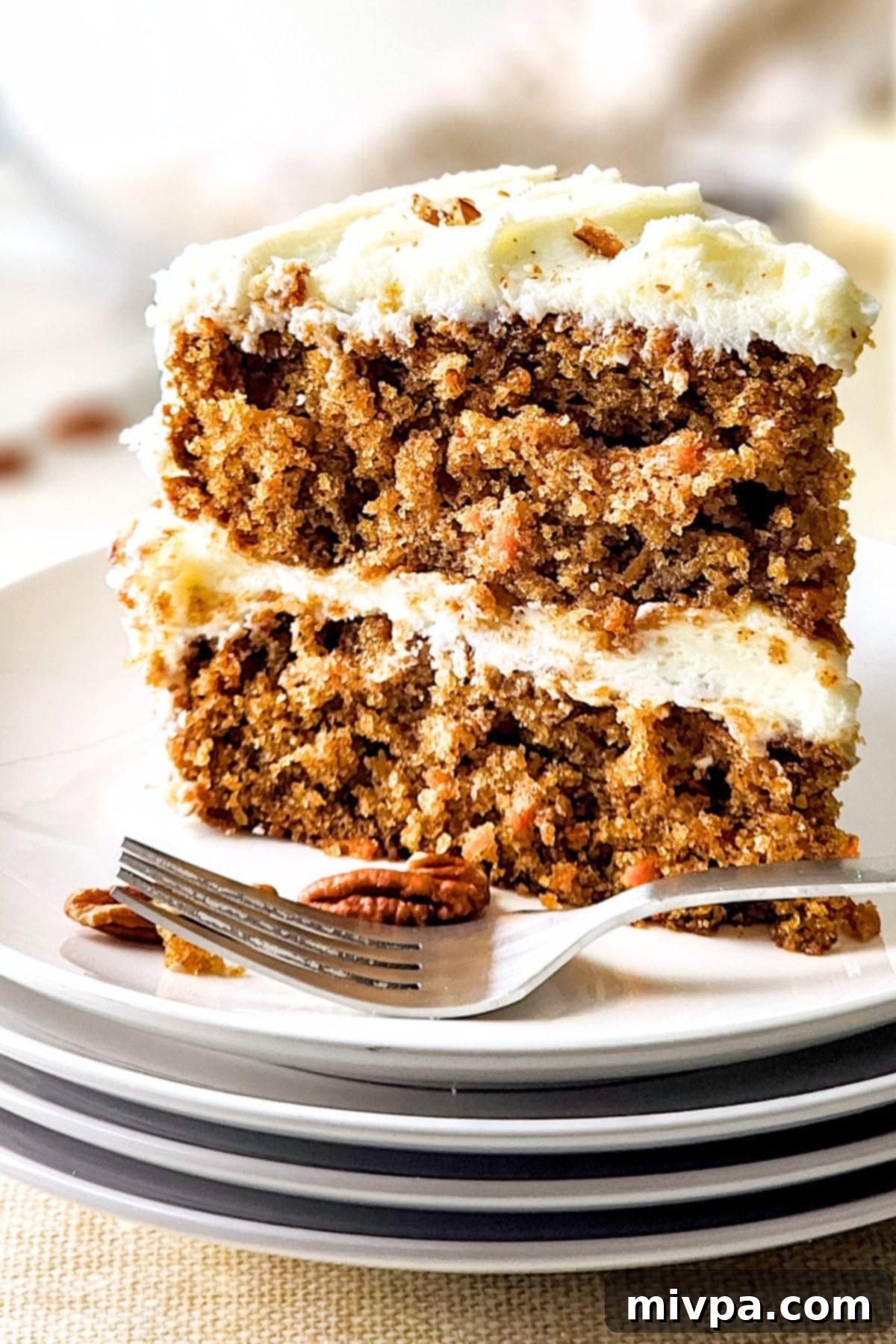
More Delicious Gluten-Free Carrot Recipes to Explore:
If you love the wholesome goodness of carrots, you’ll adore these other gluten-free recipes that hero this versatile root vegetable:
- Easy Carrot Muffins (Gluten-Free, Dairy-Free) – Perfect for a quick breakfast or snack!
- Carrot Cake Bread (Gluten-Free, Dairy-Free) – A simpler, loaf-style version of the classic cake.
- Carrot Turmeric Soup (Gluten-Free, Vegan) – A savory and healthy option featuring carrots.
Other Irresistible Gluten-Free Cakes to Indulge In:
Looking for more amazing gluten-free dessert ideas? Explore our collection of delightful cakes perfect for any celebration or just a sweet craving:
- Gluten-Free Mini Bundt Cakes (Vegan)
- Amazing Flourless Almond Cake (Gluten-Free, Dairy-Free)
- 31 Gluten-Free Cake Recipes for Any Ocassion
- Gluten-Free Pistachio Cake (Dairy-Free)
P.S. If you try this incredible gluten-free dairy-free carrot cake recipe, I would absolutely love for you to leave a star rating below and/or a review in the comment section further down the page. Your feedback is always genuinely appreciated and helps other bakers! Be sure to explore my entire Recipe Index for a treasure trove of delicious recipes on the blog. You can also connect with me and find more culinary inspiration on Pinterest, Facebook, or Instagram! Don’t forget to sign up for my Email List to receive fresh, new recipes directly in your inbox each week!
Print
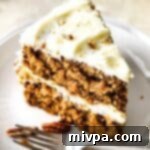
Gluten-Free Carrot Cake (Dairy-Free)
5 Stars 4 Stars 3 Stars 2 Stars 1 Star
5 from 4 reviews
Author: Felicia Lim
Total Time: 50 minutes
Yield: 16 slices
Diet: Gluten Free
Description
This exquisite gluten-free carrot cake is a testament to flavor and texture, offering a moist, tender crumb infused with warming spices. It’s generously adorned with a rich, tangy dairy-free cream cheese frosting and finished with a scattering of crunchy chopped pecans. Perfectly suited for festive gatherings, joyous birthdays, or cherished holidays like Easter and Mother’s Day, this recipe ensures everyone can enjoy a truly decadent dessert, completely dairy-free and gluten-free.
Ingredients
Units
Scale
For the Cake Batter:
- 2 1/2 cups gluten-free measure-for-measure flour blend
- 3/4 teaspoon xanthan gum (omit if your gluten-free flour blend already includes it)
- 1 cup white granulated sugar
- 1 cup dark brown sugar (packed)
- 1 1/2 teaspoons gluten-free baking soda
- 1 teaspoon gluten-free baking powder
- 1 teaspoon salt
- 2 teaspoons ground cinnamon
- 1 teaspoon ground nutmeg
- 1 1/2 cups sunflower oil (or other neutral vegetable oil)
- 4 large eggs
- 2 teaspoons vanilla extract
- 1/2 cup unsweetened almond milk (or other non-dairy milk)
- 3 cups finely shredded carrots
For the Dairy-Free Cream Cheese Frosting:
- 3/4 cup unsalted dairy-free butter, softened
- 8 oz. dairy-free cream cheese, softened
- 4 cups powdered sugar, sifted (don’t skip the sifting for a smooth frosting!)
For the Garnish (optional):
- 1 cup unsalted chopped pecans, for topping and decoration
Instructions
- Whisk Dry Ingredients: In a large mixing bowl, thoroughly combine all the gluten-free measure-for-measure flour, xanthan gum (if using), white sugar, brown sugar, baking soda, baking powder, salt, ground cinnamon, and ground nutmeg. Whisk until perfectly combined, ensuring no lumps remain for an even bake.
- Add Wet Ingredients: Introduce the vegetable oil, eggs, vanilla extract, and almond milk to the dry mixture. Whisk until the batter becomes smooth and homogenous, making sure all ingredients are fully incorporated without overmixing.
- Fold in Shredded Carrots: Gently fold in the finely shredded carrots using a spatula until they are thoroughly combined and evenly distributed throughout the batter, contributing to the cake’s signature moisture.
- Divide Batter Between Pans: Generously spray two 9-inch baking pans with nonstick baking spray. Divide the carrot cake batter evenly between the two prepared pans to ensure uniform baking and cake layers.
- Bake Until Ready: Bake in a preheated oven at 350°F (175°C) for 30-35 minutes, or until a wooden toothpick inserted into the center of each cake comes out clean, indicating they are fully cooked.
- Prepare Cream Cheese Frosting: While the cake bakes and cools, prepare the dairy-free cream cheese frosting. In a large bowl, cream together the softened dairy-free butter and dairy-free cream cheese using a hand mixer until smooth and fluffy. Gradually add the sifted powdered sugar (2 cups at a time), blending well after each addition until the frosting is thick, creamy, and lump-free.
- Cool Cake Completely: Once baked, remove the cake layers from the oven and allow them to cool completely on a wire rack. This critical step ensures your frosting won’t melt when applied.
- Spread Frosting: Once the cake is entirely cooled, place the first cake layer on a serving plate. Spread an even layer of frosting over its top. Carefully place the second cake layer on top, then cover the top and sides of the entire cake with the remaining frosting, smoothing it out for a beautiful finish.
- Garnish with Pecans: To complete your masterpiece, press the chopped pecans around the sides of the cake and sprinkle some on top for an elegant garnish and added crunch.
- Serve and Enjoy: Slice your homemade gluten-free dairy-free carrot cake, serve generously, and savor every moist, flavorful bite!
Notes
Gluten-Free Flour: For the best results in terms of texture, I highly recommend utilizing a good-quality gluten-free measure-for-measure flour blend. This type of blend is designed to substitute regular all-purpose flour on a 1:1 basis and typically consists of lighter flours/starches such as rice flour, tapioca starch, corn starch, or potato starch. These ingredients contribute to a delicate, airy crumb and a lighter final texture. I strongly advise against using gluten-free blends that are predominantly made from heavier flours, like garbanzo bean flour, as these can lead to a much denser and potentially gummy texture in your finished cake.
Xanthan Gum: Xanthan gum is an indispensable ingredient in gluten-free baking, effectively replacing the elastic properties of gluten. It acts as a binder, helping to hold the ingredients together and prevent the cake from becoming crumbly. If your chosen gluten-free flour blend does not explicitly state that it includes xanthan gum, it’s crucial to add it separately as specified in the recipe. For individuals with an allergy to xanthan gum, an equal amount of psyllium husk powder can be used as an effective substitute, offering similar binding benefits.
White Sugar: Our recipe uses white granulated sugar for sweetness. You can easily substitute this with cane sugar if preferred, as it performs identically in baking. For those managing blood sugar levels, such as diabetics or individuals with insulin resistance, granulated monkfruit sweetener is an excellent 1:1 sugar substitute. It has a zero glycemic index and will not cause a rise in blood sugar, allowing for guilt-free enjoyment.
Brown Sugar: We’ve opted for dark brown sugar to impart a deeper, richer flavor due to its higher molasses content. However, light brown sugar or coconut sugar can be used as direct substitutes, offering slightly different but equally delicious flavor profiles. For a sugar-free alternative that mimics brown sugar, granulated monkfruit sweetener (specifically a brown sugar blend) is an ideal choice for diabetic or insulin-resistant individuals, maintaining a zero glycemic index.
Baking Soda & Baking Powder: The combination of both baking soda and baking powder is critical for achieving the perfect rise and a light, airy texture in this cake. Baking soda reacts with acidic ingredients in the batter (like brown sugar), while baking powder provides consistent lift. For those with Celiac disease or gluten intolerance, always ensure you use certified gluten-free baking soda and gluten-free baking powder to avoid any gluten contamination.
Spices: The warm, comforting flavors of ground cinnamon and ground nutmeg are classic in carrot cake and are highly recommended for this recipe. They provide an aromatic depth that perfectly complements the carrots and sweetness. You can even add a pinch of ground ginger or cloves for an extra layer of warmth.
Oil: I prefer using sunflower oil because it’s neutral in flavor and readily available. However, you have several other excellent options: canola oil, light olive oil, avocado oil, or melted coconut oil (ensure it’s refined if you don’t want a coconut flavor in your cake). For a richer profile that remains dairy-free, melted unsalted dairy-free butter also works wonderfully. If you are not lactose-intolerant, feel free to use melted unsalted regular butter for a traditional taste.
Eggs: Eggs are crucial binders in this recipe, providing structure, moisture, and helping the cake rise. I have not personally tested this recipe with egg substitutes. However, if you have an egg allergy or are aiming for a vegan carrot cake, you could experiment with aquafaba (the liquid from canned chickpeas) or a commercial egg replacer. Be aware that these substitutions may slightly alter the cake’s texture and overall moisture content.
Vanilla Extract: Adding a touch of vanilla extract is highly recommended. It enhances all the other flavors in the cake, adding a subtle depth and warmth that elevates the overall taste profile significantly.
Almond Milk: I typically use an unsweetened version of my homemade almond milk for its neutral flavor. You can substitute this with any other unsweetened non-dairy milk you prefer, such as cashew milk, rice milk, tigernut milk, oat milk, or coconut milk (from a carton, not canned culinary coconut milk). If you are not lactose intolerant, regular dairy milk can be used as a direct substitute.
Shredded Carrots: For the most tender and well-integrated carrots in your cake, it’s essential to grate them as finely as possible. Using the smallest holes on your box grater will achieve the best results. Finely shredded carrots soften beautifully during baking and blend seamlessly into the batter, ensuring a consistently moist and delicious cake without large, tough pieces of carrot.
Butter for Frosting: To keep the frosting entirely dairy-free, I use unsalted dairy-free butter. This product is formulated to mimic the taste and texture of regular butter, ensuring a rich and creamy frosting. Alternatively, refined coconut oil can be used, though it might result in a slightly different consistency and flavor. If you can consume dairy, unsalted regular butter is the traditional and excellent choice for cream cheese frosting.
Cream Cheese for Frosting: For a delicious dairy-free cream cheese frosting, I use dairy-free cream cheese. There are several high-quality brands available today that offer excellent flavor and texture. If dairy is not a concern, traditional unsalted regular cream cheese can be used for the classic tangy and rich cream cheese frosting that carrot cake is famous for.
Powdered Sugar: Powdered sugar, also known as confectioner’s sugar, is key to achieving a silky-smooth, lump-free frosting. Its ultrafine texture dissolves effortlessly, creating a wonderfully creamy consistency. It is imperative to sift the powdered sugar before adding it to your frosting to remove any potential clumps. For those who are diabetic or insulin-resistant, powdered monkfruit sweetener is a perfect 1:1 substitute that has a zero glycemic index and will not impact blood sugar levels.
Pecans: I love to adorn this cake with unsalted chopped pecans for their delightful crunch and earthy flavor, which complements the spiced cake beautifully. However, you can easily substitute them with other unsalted chopped nuts such as almonds, walnuts, macadamia nuts, cashew nuts, or even pistachio nuts. Choose your favorite, or use a mix for added complexity!
Storing & Freezing: To store your frosted gluten-free dairy-free carrot cake, place it in an airtight container or wrap it tightly in plastic wrap. Keep it refrigerated for up to 5 days to maintain freshness. To freeze the cake, ensure the frosting is well set (a quick chill in the fridge helps). Then, wrap the entire cake or individual slices securely in plastic wrap, followed by aluminum foil. Place it in a freezer-safe container and freeze for up to 2 months. Thaw frozen carrot cake completely overnight in the refrigerator before cutting and serving to preserve its texture and moisture.
- Prep Time: 15 mins
- Cook Time: 35 mins
- Category: Cake
- Method: Baking
- Cuisine: American
